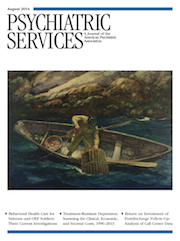With so many books on psychiatric interviewing out there, why would we need another one, and what sets this book apart from others? As a training director and the person who teaches psychiatric interviewing in our residency program, I can tell you that I have purchased many interviewing textbooks, and, like Goldilocks, I find many too simple or too complex, too long or too short, too psychodynamic or too concrete and formulaic. This one is “just right”!
This book is written by three amazing and highly respected leaders in the field of psychiatric education and clinical care. The three have a lot in common: all are chairs of departments, all have a long-abiding interest in psychotherapy, and all have dedicated their careers to providing the best possible care for their patients. The biopsychosocial approach is at the heart of everything they do and is exemplified beautifully in this volume.
In the preface, the authors say, “The heart of the philosophy embodied in this work is that we must learn who is the person with the illness, as well as what is the illness, and why it appeared, reappeared, or continues, in order to maintain the treatment relationship most likely to produce a positive clinical outcome.” Not surprisingly then, this book starts out with a section titled “Listening to the Patient,” followed by “Physician-Patient Relationship” and “The Cultural Context of Clinical Assessment.” These three chapters lay the groundwork for what will follow. Reading them made me feel as though I was sitting with a very learned and sage mentor who was imparting life-long lessons in the art of doctoring. (Let me interject here that every doctor—not just psychiatrists—could benefit by reading this part of the book.) Some quotations from the first chapter that particularly impressed me and speak to the wisdom of this work were: “The first step in developing good listening skills involves coming to grips with the importance of inner experience in psychiatric treatment and diagnosis.” “There are no bad historians, only patients who have not yet found the right listener.” “It is embarking on the history taking journey together—free of judgments, opinions, criticism, or preconceived notions—that underpins rapport.” These enlightening and inspirational first three chapters are punctuated by pithy clinical vignettes that demonstrate the art of listening, the uniqueness of each patient, and how “hearing the patient” can change the course of caring for the patient in a remarkably positive way.
Only after these authors have clearly set the stage for listening, caring and understanding do they dive into the mechanics of the interview process—data gathering, mental status examination, diagnostic considerations—but again laid out in the spirit of understanding the patient as person, not just a collection of signs and symptoms. There are several helpful tables in this section that provide suggestions and language that can be used to elucidate various interviewing techniques. One table relates to “directiveness” in the interview (for example, open-ended questions, restatement, clarification, confrontation, redirection, and limit setting), another gives examples of various interventions that can be used during the interview (such as supportive, fact oriented, and feeling oriented), and another section examines feedback in the interview (such as sharing of thoughts or reactions, proposing a formulation, and responses to questions). There is even a table on what not to say (“obstructive interventions”).
A chapter on interviewing special populations focuses on techniques and issues to be mindful of when interviewing patients in special circumstances (such as in the emergency department, medical ward, and disaster situations) or from special populations (patients with psychosis, suicidal ideation, and children and adolescents). It also advises on effective use of interpreters when patient and interviewer do not share the same language.
The chapter on “Formulation” brings all the content home, helping readers to pull together what they have seen, heard, and felt in an effort to understand the patient in front of them. Again, the biopsychosocial dimensions are strongly emphasized, and defense mechanisms, the patient’s coping strategies, cultural and ethnic heritage, relationships, self-esteem, and morality are all considered.
Clinical evaluation, including general medical work-up, psychological testing, rating scales, and physical examination, is also covered, and initial treatment planning, briefly covering disposition as well as biological and psychosocial interventions, is described.
The closing chapter, often not found in a book on interviewing, discusses the topic of professional ethics and boundaries—a welcome addition that provides the framework for sound relationships and development of the therapeutic frame. This book is probably best suited to mental health providers in the early stages of training, but readers at any level will learn and grow from this excellent resource.
Acknowledgments
The reviewer reports no competing interests.

